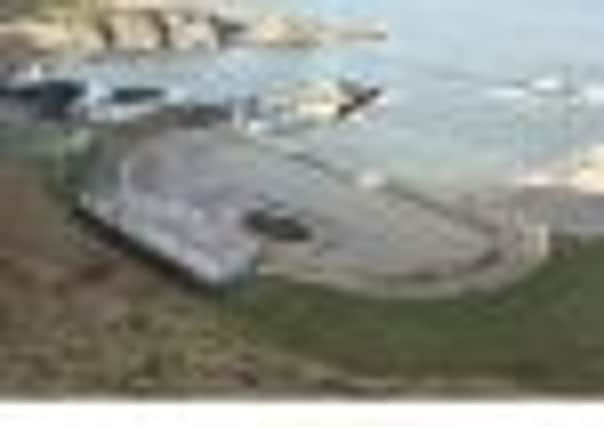Tarlair swimming pool to be saved from destruction


• Tarlair open air swimming pool set for “moderate” work while long-term future is secured
• Category-A art deco pool closed in 1995
• Talair one of three remaining outdoor swimming pools in Scotland
Advertisement
Hide AdThe redundant Tarlair open air swimming pool complex on the outskirts of Macduff attracted thousands of visitors every year before it closed in 1995.
Hailed as “one of the forgotten architectural gems of Scotland,” the outdoor complex is on the “high risk” list of Scotland’s Buildings at Risk Register and was awarded Category-A listed status in 2007 by Scottish Ministers - the first of Scotland’s three surviving outdoor seaside pools to be awarded the coveted protection.
And next week Aberdeenshire councillors are being urged to approve plans to spend up to £1.1 million on a “moderate” refurbishment scheme while more detailed options for the future of the complex are investigated - including the possibility of turning the pool into an oyster hatchery.
The large outdoor swimming pool, boating pond and art deco tea pavilion first opened in 1931. John Miller, the architect, who was also the burgh surveyor for Macduff, designed the pool’s outer wall to be fractionally below high-tide level, enabling waves to roll in over the edge, refilling it with clean sea water twice a day.
The Buildings at Risk Register states: “It is one of only three known surviving sea-side outdoor swimming pool complexes in Scotland, and certainly the one that best retains its original appearance. The other examples are Stonehaven (1934, listed at category B), which was never tidal, and Gourock, which has been greatly altered and is no longer tidal.
“Its state of intactness, simple yet stylish design, early date and magnificent location all contribute to make this pool the outstanding surviving example of its type in Scotland.”
Advertisement
Hide AdMembers of the council’s Banff and Buchan area committee are being asked to approve a refurbishment scheme while officers bring back a further report on a more detailed design, costing,and management programme for the future of the site.
Stephen Archer, the council’s Director of Infrastructure Services, states in a report to the committee: “When constructed the complex was the very latest in seaside leisure and the pools were highly fashionable meeting places from the 1930s to the early 1970s. Very few pools now survive, but because of its design it was listed as Category A by Scottish Ministers in February 2007. As a consequence of this listing the council has a statutory responsibility to safeguard the historic character of the property.”
Advertisement
Hide AdHe states that the recommended option to safeguard the pool is to seek planning and Listed Buildings permission to demolish the changing rooms; infill the boating and paddling pools and create soft landscaped areas at the site.
Mr Archer stresses: “The main pool would be retained and used either for the model boat club or stocked with fish and plants. At a minimum, external refurbishment of the tea pavilion would be required and full refurbishment dependant on the demand for the facility. A figure of £500,000 to £750,000 is envisaged at this juncture, with potentially an additional £400,000 to refurbish the tea pavilion.
“The cost of a full refurbishment would be in the region of £2.5 million. This would result in the pools being taken back into use. Whilst it would be popular with elements of the community, it is questionable whether the capital and revenue outlay could be supported.”
He adds: “The Economic Development Service has stated that there is the potential to develop an oyster hatchery at Tarlair. There is a national demand and market for juvenile oysters and therefore an oyster hatchery is far more viable than a lobster hatchery. This would require a detailed commercial feasibility study with Seafood Scotland. Historic Scotland would need to be consulted as new structures would be required and some of the existing structures would need to be modified for commercial use. They have informally indicated that the option could be acceptable.
“There has been interest from a potential private investor on the basis of the council covering the basic refurbishment costs. Early indications are that rental returns from such a venture would be modest compared to the capital costs. If developed as an oyster hatchery, it would be fenced off and therefore would not be freely accessible to members of the public.”